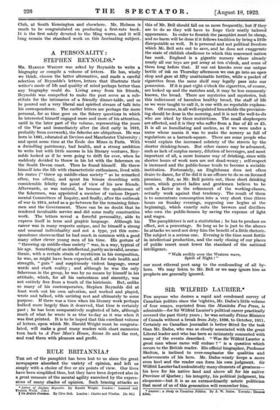MING PORCELAINS.*
Tim Ming dynasty which ruled China from 1868 to 1644 is for those who know most about the subject the golden age of Chinese porcelain. The expert potters of the Imperial factory at Ching-te-Chen had freed themselves from all trace of the archaism of the preceding periods of Sung and T'ang and Han, while with impeccable taste they avoided the over-elaboration and ostentation which, to critical eyes, are the failings of their marvellously skilful successors in the reigns of K'ang Hsi, Yung Cheng and Ch'ien Lung. The Chinese themselves have long exalted Ming wares above all others, but their praise appeared to be excessive so long as Western Europe, through ignorance or through the wiles of dealers, was ready to accept crude and early productions or later imitations as the genuine Ming porcelain. We know better now that a good many Ming pieces have been definitely identified—some of them imported into Europe in the fifteenth or sixteenth century, others found in India or in Persia, others, again, brought from Chinese Imperial collections like that of the Summer Palace which was looted by the Allies in 1860. Mr. R. L. Hobson, the learned Keeper of the Department of Ceramics at the British Museum, has illustrated, in his excellent new book on the Ming wares, a long series of indubitably authentic examples from well-known collections which show once for all that the Ming potters were masters of their craft, unsurpassed and indeed unsurpassable. Their work is of infinite variety, in form and in decoration, but all their best things, which were made for the Court, are distinguished by. the same elegance of design, the same perfection of potting. When a veteran collector, in an expansive moment, brings out from a locked drawer a little case and, opening it, reveals a hand-bowl of early Ming blue and white or a dish of white porcelain delicately incised with a Kylin or a flower, one can readily understand the wonder with which fifteenth-century Europeans gazed at a stray piece of " porcellana," so lustrous, fragile and transparent, as to seem the work of magicians rather than of men. One can sympathize alike with the superstitious who thought that this wonderful Eastern ware would shiver to atoms at contact with poison, and with the heavy-handed Western potters who tried in vain, for generation after generation, to make a true porcelain as delicate and translucent as the Ming wares of Ching-te-Chen or Te-hua.
The Ming potters, of course, like our own Staffordshire potters or our Lancashire cotton-spinners and weavers, exemplified the skill that comes from the hereditary practice of any craft. For countless centuries there had been potteries in the neighbourhood of Nanking, and the gradual development of the technique can be traced from before the Christian Era. The workers in the Court factory, which was reestablished in 1869, had the advantage not only of receiving large and regular orders from the Palace, but also of being guided and controlled by the Court artists. Sometimes, as Mr. Hobson points out, a Court official would exasperate the potters by ordering more than the factory could supply by a given date : it is recorded that in 1571 a Censor had to inter= fere when the Court had asked for 105,770 pieces to be delivered in eight months. Sometimes, too, the Court wanted excessively large pieces, the firing of which was difficult and precarious. " Thereupon the divine T'ung took pity on his fellow-potters and served them by alone laying down his life. He plunged into the fire and the bowls came out perfect." But it is clear that the Court patronage was invaluable in helping to maintain a very high standard of work ; the porcelain made for the Emperors was always far superior to the porcelain made for the trade or for export. Mr. Hobson begins with an interesting chapter on technique and then goes methodically through the reigns of the Ming sovereigns, dwelling especially on the periods of Hsilan Te (1428-85), Ch'eng Hua (1465-87) and Wan Li (1573-1619), in which the very finest porcelains were produced. At the close he gives a useful chapter on marks and dates. He is able to refer from his descriptions to no fewer than 128 plates, eleven of which are in colour. It would be too much to say that the coloured plates all reproduce accurately the exquisite Ming colours—the characteristic turquoise green above all has baffled the printer—but they are commendable, and the black and white illustrations will recall to the enthusiast many wonderful examples that are in museums or have been exhibited at the Burlington Fine Arts
Club, at South Kensington and elsewhere. Mr. Hobson is much to be congratulated on producing a first-rate book. It is the first solely devoted to the Ming wares, and 'it will long remain the standard work on this fascinating subject.



































 Previous page
Previous page